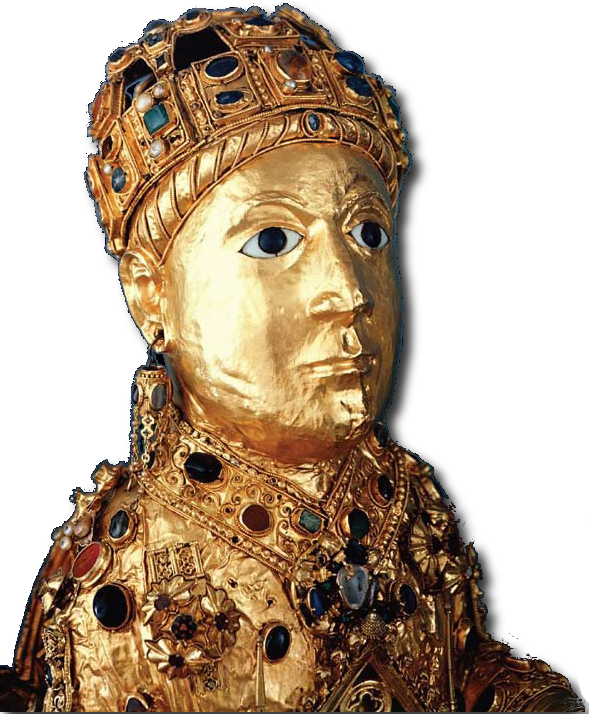 |
MedievalEuropeOnline
the web home of Medieval Europe: A
Short History
|
Chapter 8: New Paths to God, c. 1000-1300
ONLINE RESOURCES:
Ancrene Wisse (a guide for anchoresses)
Monastic Matrix: Women's Religious Communities
TEST YOURSELF: Have you read Chapter 8 adequately? Test yourself here.
TIMELINES: Want to download a timeline from chapter 8? Click here.
CITATIONS: Want to find the source of a quote used in chapter 8? Click here.
HISTORICAL STUDIES:
Constance Hoffman Berman, The Cistercian Evolution: The
Invention of a Religious Order in Twelfth-Century Europe (2000).
A major revisionist history of the first century of Cistercian reform.
John H. Arnold, Belief and Unbelief in Medieval Europe
(2005). See also Rosalind and Christopher Brooke, Popular
Religion in the Middle Ages (1985); Jean-Claude Schmidt, Ghosts
in the Middle Ages (1998); and Benedicta Ward, Miracles
and the Medieval Mind (1982).
Caroline Walker Bynum, Jesus as Mother: Studies in the
Spirituality of the High Middle Ages (1982). Perceptive essays
on Christian spirituality. See also Giles Constable, The
Reformation of the Twelfth Century (1996).
Fiona Griffiths, The Garden of Delights: Reform and Renaissance
for Women in the Twelfth Century (2007). See also Jo Ann Kay
McNamara, Sisters in Arms: Catholic Nuns Through Two Millennia
(1996), Penelope Johnson, Equal in Monastic Profession: Religious
Women in Medieval France (1991), and Bruce L. Venarde, Women’s
Monasticism and Medieval Society: Nunneries in France and England,
890–1215 (1997).
Malcolm Lambert, Medieval Heresy: Popular Movements from the
Gregorian Reform to the Reformation (3rd edition, 2002). See
also R.I. Moore,The War on Heresy (2012). For Cathars in
particular, see Mark Gregory Pegg, A Most Holy War: The
Albigensian Crusade and the Battle for Christendom (2008).
C. H. Lawrence, Medieval Monasticism (3rd edition, 2001).
van Liere, Frans, An Introduction to the Medieval Bible (2014). A readable and sensible introduction to the Bible, as it was used and understood by medieval people.
Lester K. Little, Religious Poverty and the Profit Economy (1978).
A skillful and highly original study of the relationship between the
mendicants and the merchant class. See also C. H. Lawrence, The
Friars: The Impact of the Early Mendicant Movement on Western
Society (1994).
Joseph H. Lynch, The Medieval Church: A Brief History (1992). An excellent survey. See also Gerd Tellenbach, The Church in Western Europe from the Tenth to the Early Twelfth Century (1993).
PRIMARY SOURCES IN PRINT:
Roberta Anderson and Dominic Aidan Bellenger, eds., Medieval
Religion: A Sourcebook (2007). A wide-ranging collection that
touches on institutions as well as saintliness, practices as well as
heresy. It includes some texts for Judaism, Islam, and Orthodox
Christianity.
Constance H. Berman, ed., Women and Monasticism in Medieval
Europe: Sisters and Patrons of the Cistercian Reform (2002).
Thomas Head, ed., Medieval Hagiography: An Anthology (2000). A wide-ranging collection of newly translated texts—from Athanasius of Alexandria to Joan of Arc. See also Mary-Ann Stouck, ed., Medieval Saints: A Reader (1999). Organized by topic, not by saint, this collection also spans the entire medieval millennium.
Daniel Marcel La Corte and Douglas J. McMillan, eds.,Regular Life: Monastic, Canonical, and Mendicant Rules (second edition, 2004).
Rubin, Miri, ed. Medieval Christianity in Practice (2009).
A new collection of documents and commentary, each by a distinguished
scholar-teacher.
John Shinners, ed., Medieval Popular Religion, 1000–1500 (1997).
An outstanding collection.
Bruce Venarde, Robert of Arbrissel: A Medieval Religious Life
(2003). A collection of materials, with extensive introductions and
annotations.
Diana Webb, Pilgrims and Pilgrimage in the Medieval West (1999). The thematic sections of this collection are preceded by concise, accessible essays.
These listings are works-in-progress. They are highly selective and aimed at the practical needs of students and teachers. If you have suggestions, please send them to Judith Bennett.